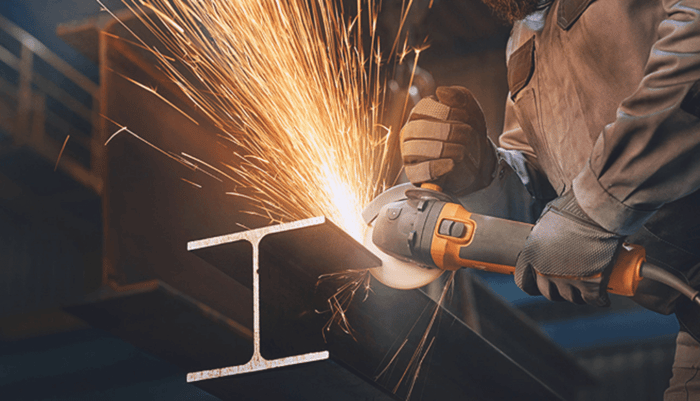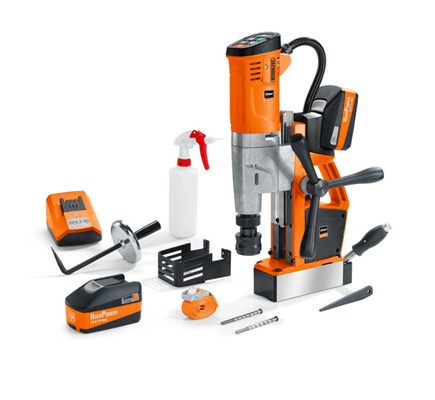
The Essential Metalworking Tool Guide for Serious Crafters
Having the right tools is crucial for precision and quality in metalworking. This guide covers four categories of tools: cutting, shaping, joining, and finishing, helping you understand which tools to choose for your projects.
Cutting Tools
Cutting tools are vital for shaping metals like steel, aluminum, and brass. From hand tools like hacksaws to advanced equipment such as CNC machines, the right tool makes cutting easier and more precise.
Types of Cutting Tools
- Bandsaw: Ideal for intricate cuts in thicker materials.
- Grinder: Perfect for surface finishing and material shaping.
- Lathe: Excellent for creating cylindrical shapes with high accuracy.
Best Practices
Maintain a steady hand and use the right tool for each material. Keep tools sharp to extend their lifespan and ensure precision. Always wear safety gear and keep your workspace organized to prevent accidents.
 4" x 6" Metal Cutting Bandsaw #15-400 is designed to cut as a horizontal bow saw but will also operate as a vertical bandsaw when a table (included) is installed.
4" x 6" Metal Cutting Bandsaw #15-400 is designed to cut as a horizontal bow saw but will also operate as a vertical bandsaw when a table (included) is installed.Shaping Tools
Shaping tools allow you to refine the form of your metal pieces. From simple files to complex CNC mills, selecting the right tool ensures better precision and quality in your projects.
Types of Shaping Tools
- Chisels & Files: Great for refining edges and intricate detailing.
- CNC Milling Machine: Offers high precision for complex shapes and parts.
Tips for Using Shaping Tools
Ensure your tools are suitable for the material you're working with. Regularly inspect tools for wear and keep them sharp to avoid mistakes. Practice controlled pressure and adjust your speed based on the material.
Joining Tools
Joining tools, including welders and riveters, are essential for connecting metal pieces. Whether welding, soldering, or riveting, each tool serves a specific purpose, depending on the material and strength required.
Types of Joining Tools
- MIG Welders: Fast and effective for thicker materials.
- TIG Welders: Provide precision for detailed work.
- Soldering Tools: Essential for electronics and delicate work.
Joining Techniques
Before joining, clean metal surfaces to remove contaminants. Use appropriate heat levels and apply the right materials for a strong bond. Always follow safety protocols to avoid burns and exposure to harmful fumes.
 FEIN 72324661090 BLK 3.5 E Corded Nibbler up to 10 gauge Powerful nibbler with unlimited curve-compatibility for grooves and cut-outs.
FEIN 72324661090 BLK 3.5 E Corded Nibbler up to 10 gauge Powerful nibbler with unlimited curve-compatibility for grooves and cut-outs.Finishing Tools
Finishing tools help you refine your metal pieces for both aesthetic appeal and functionality. Tools like grinders, polishing pads, and sanders are crucial for smooth, polished results.
Types of Finishing Tools
- Grinding Wheels: Available in different grits to remove burrs and shape edges.
- Polishing Tools: Buffing pads and compounds to achieve a high-luster finish.
- Sanding Tools: Handheld sanders and abrasive sheets for smoothing surfaces.
Achieving a Professional Finish
Start with coarser grits for shaping and move to finer abrasives for detailing. Regular maintenance of your finishing tools ensures consistent results. For a protective finish, consider applying wax or sealant.
Conclusion
Mastering metalworking tools enhances your ability to create precise, high-quality projects. With the right tools and proper techniques for cutting, shaping, joining, and finishing, you can elevate your craft to professional levels.
 FEIN 71700261090 AJMU 137 PMQW Magnetic Base Cordless Core Drill Suitable for mag base drilling in metal, providing precise holes up to 1-3/8 inches in diameter. Ideal for custom fabrication tasks that require drilling, tapping, and finishing of metal parts.
FEIN 71700261090 AJMU 137 PMQW Magnetic Base Cordless Core Drill Suitable for mag base drilling in metal, providing precise holes up to 1-3/8 inches in diameter. Ideal for custom fabrication tasks that require drilling, tapping, and finishing of metal parts.FAQ
What tools are essential for metalworking?
Essential tools include hammers, pliers, anvil, chisels, files, and a vise. These tools are needed for shaping and creating metal pieces.
How is a hammer used in metalworking?
A hammer is used for shaping, bending, and creating textures in metal, making it a key tool in metalworking.
What is the purpose of an anvil?
An anvil provides a stable surface for hammering and shaping metal, essential for accurate metalworking.
Why are chisels important?
Chisels are used for cutting, shaping, and refining metal pieces, making them indispensable for detailed work.
How does a vise help in metalworking?
A vise holds metal pieces securely in place, allowing for precise shaping and cutting.
Why is having a variety of files important?
Files help smooth, shape, and refine metal, and having a range of file types allows for greater flexibility in your work.





